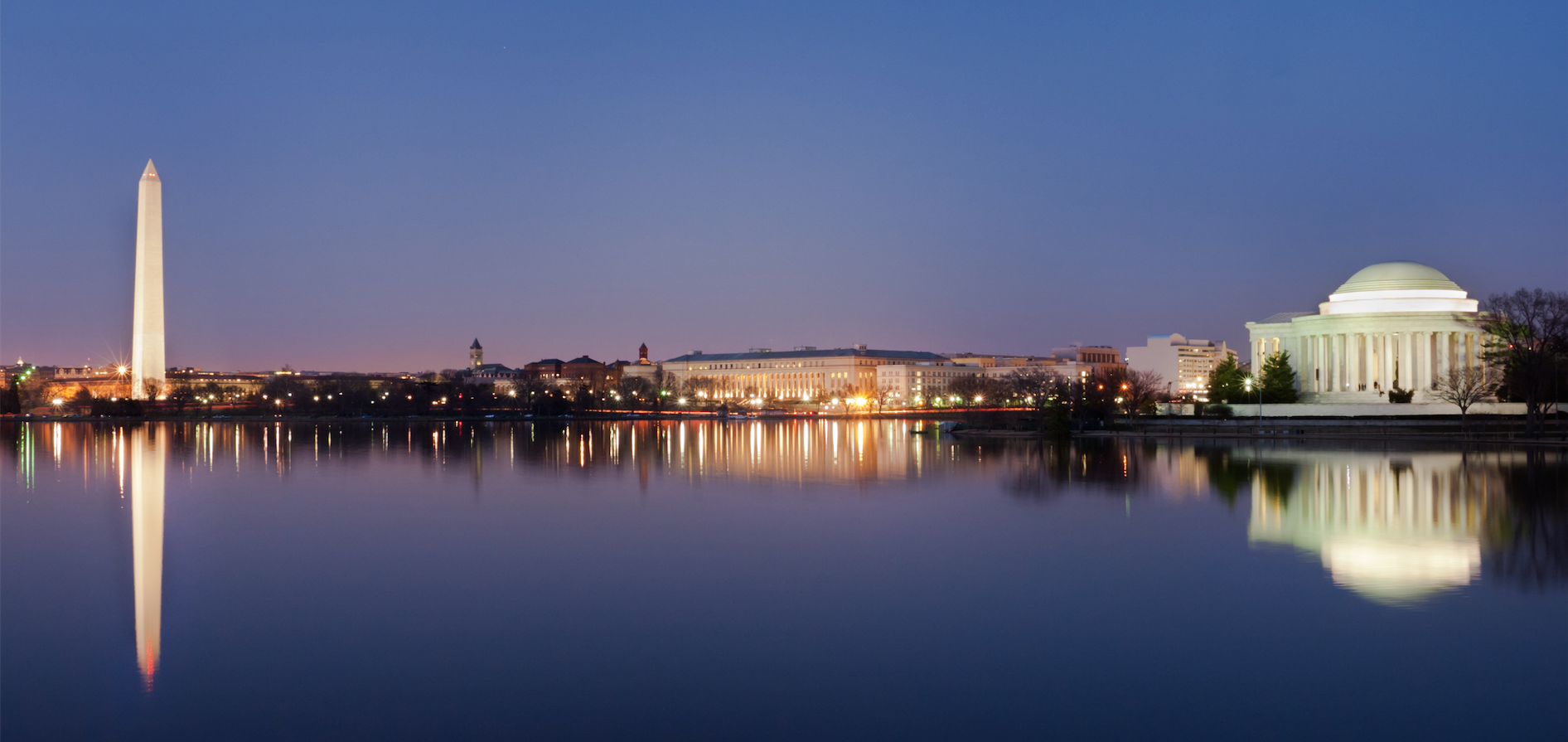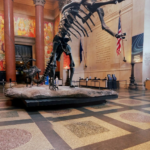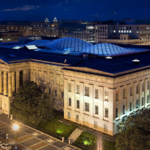

Restaurants
Fort Hunt Park
(NPS Photo)
Originally part of George Washington’s Mount Vernon estate, the land that is Fort Hunt Park has undergone several transformations. Batteries at Fort Hunt defended the Potomac River during the Spanish American War; the Civilian Conservation Corps operated a camp there during the Great Depression; and soldiers at Fort Hunt interrogated prisoners, trained pilots in escape and evasion, and combed German documents for intelligence during World War II. Today it is a favorite spot for picnicking.
Fort Hunt Park is located near the shores of the Potomac River in Virginia. Mixed hardwood forests and open fields provide a variety of habitats for birds and other wildlife. Learn more…
Torpedo Factory
It all began the day after Armistice Day, November 12, 1918, which was the anniversary of the official end of World War I. Ironically, on that day the U.S. Navy began construction on the original building, which became the U.S. Naval Torpedo Station. When fully operational, it was responsible for the manufacture and maintenance of torpedoes for the next five years. Work stopped and the facility served as a munitions storage area until World War II. Production on the Mark XIV, a submarine borne torpedo, and the Mark III aircraft torpedo then resumed at an intense rate; in fact, men and women worked around the clock and were given only two days off a year. Gradually as space was needed, ten additional buildings were added to the complex.
The green torpedo currently displayed in the main hall was actually made here in 1945. This Mark XIV torpedo is painted bright green so that the Navy could find it in the water when it was tested. Its log book, in the exhibit case, tells its history, and lists the submarines on which it traveled. The silver colored torpedo displayed in the back hall is a type which was dropped from airplanes and was not made here at the Torpedo Factory. Read more…
Lee-Fendall House
Revolutionary War hero Henry “Light Horse Harry” Lee, father of Confederate General Robert E. Lee, purchased several lots on North Washington Street in Alexandria soon after the War for Independence. He later sold the lot at the corner of Oronoco Street to his cousin Philip Richard Fendall, who built this wood frame house in 1785. From 1785 until 1903, the house served as the home to thirty-seven members of the Lee family. This period of residency was interrupted during the Civil War when, in 1863, the Union Army seized the property for use as a hospital for its wounded soldiers.
History did not come to a halt upon the departure of the last member of the Lee family in 1903. Robert Downham, a prominent Alexandria haberdasher and liquor purveyor, resided with his family in this house for the next 31 years. In 1937, Downham conveyed the house to John L. Lewis. As the president of the United Mine Workers and the founder of the Congress of Industrial Organizations, Lewis is considered one of the most powerful and controversial labor leaders in American history. He lived in this house during the height of his power, and until his death in 1969.
The Lee-Fendall House is an architecturally stunning house with premier decorative arts and archival collections. Now restored to its early Victorian elegance, the house is interpreted as a Lee family home of the 1850-1870 period, presenting an intimate study of 19th century family life. The house is complemented by its beautifully restored, award-winning garden. Read more…
Lloyd House
Constructed around 1796-1797, Lloyd House is one of the best examples of Alexandria’s late eighteenth-century Georgian style, and one of five buildings of the Georgian style remaining in the city. Lloyd House is particularly important to the streetscape of Washington Street, part of the George Washington Memorial Parkway. It is assumed that the house was built by John Wise who owned the land and also built and operated the City Hotel (Gadsby’s Tavern) around the same time. There are many similarities between the two buildings.
The building is also historically significant due to the number of prominent people who lived there. Occupied initially by John Wise, it was then leased to Charles Lee, younger brother of Henry “Light-Horse Harry” Lee. Charles Lee served in the presidential administrations of George Washington and John Adams as attorney General and was appointed to a position as a federal judge during the last hours of Adams’ administration. Lee returned to private law practice, serving as council for the plaintiffs in the landmark Supreme Court case, Marbury vs Madison. He later participated with the defense in the impeachment trial of Justice Samuel Chase and treason trial of Aaron Burr.
Jacob Hoffman purchased the house and its nearly half acre lot in 1810 and soon became engaged in an extremely profitable enterprise – the refining of sugar. The production of sugar was profitable for a very brief time, and by 1825 the house and its garden were sold to Elizabeth Hooe.
In 1826, Hooe invited Benjamin Hallowell, a Quaker educator and tutor of Robert E. Lee, to move his school to the site. The school was quickly a success in terms of the numbers of students who were educated there, but Hallowell was deeply in debt. He later converted the sugar refinery and tobacco warehouse on the adjacent property to a residence and dormitory for his boarding school, and Lloyd House was sold again. Hallowell continued his school until 1842 in another location, ultimately employing a total of 29 teachers during his career in Alexandria. Hallowell educated hundreds of children and presented scientific lectures to their parents, often at The Lyceum, which he founded in 1839.
John Lloyd bought the house at auction and took possession of his new home in December 1833. Lloyd was a successful dry goods merchant and soon began investing extensively in real estate. His wife, Anne Harriotte Lee, was a first cousin of Robert E. Lee and frequently entertained Lee in the house. The Lloyd family owned the home until 1918. Read more…
Fort Ward Museum
Fort Ward is the best preserved of the system of Union forts and batteries built to protect Washington, DC during the American Civil War (1861-1865). Fort Ward Museum interprets the site’s history and offers exhibits on Civil War topics, education and interpretive programs, tours, lecture and video series, bus tours, and living history activities throughout the year. The Museum and Historic Site also interpret Alexandria, Virginia as an occupied city, the city’s role as a vital Union Army crossroads, life within the Defenses of Washington, and the everyday life of Civil War soldiers and civilians.
The historic fort provides visitors with an excellent understanding of Civil War-era military engineering. About 90% of the fort’s earthwork walls are preserved and the Northwest Bastion has been restored and reconstructed to its original condition. Learn more…
Gadsby’s Tavern Museum
Gadsby’s Tavern Museum consists of two buildings, a ca. 1785 tavern and the 1792 City Hotel. The buildings are named for Englishman John Gadsby who operated them from 1796 to 1808. Mr. Gadsby’s establishment was a center of political, business, and social life in early Alexandria. The tavern was the setting for dancing assemblies, theatrical and musical performances, and meetings of local organizations. George Washington enjoyed the hospitality provided by tavernkeepers and twice attended the annual Birthnight Ball held in his honor. Other prominent patrons included John Adams, Thomas Jefferson, James Madison, James Monroe, and the Marquis de Lafayette.
Take a moment to journey back to the 18th-century tavern and hotel where famous historical figures and everyday people dined and slept. Learn about the history, architecture, decorative arts, social customs, food, and clothing of a past era. Read more…
National Museum of the Marine Corps
The National Museum of the Marine Corps is a lasting tribute to U.S. Marines–past, present, and future. Situated on a 135-acre site adjacent to Marine Corps Base Quantico, Virginia, and under the command of Marine Corps University, the Museum’s soaring design evokes the image of the flag-raisers of Iwo Jima and beckons visitors to this 120,000-square-foot structure. World-class interactive exhibits using the most innovative technology surround visitors with irreplaceable artifacts and immerse them in the sights and sounds of Marines in action. Read more…












